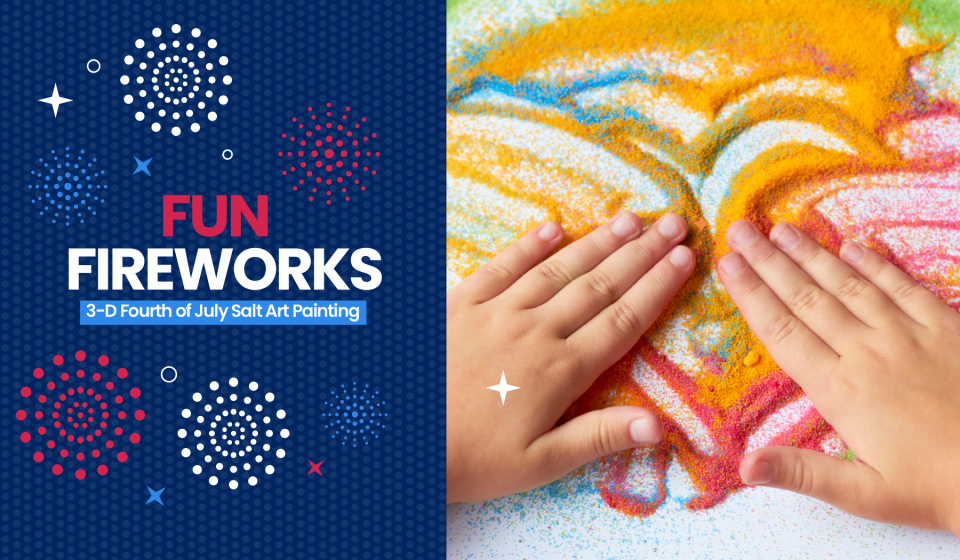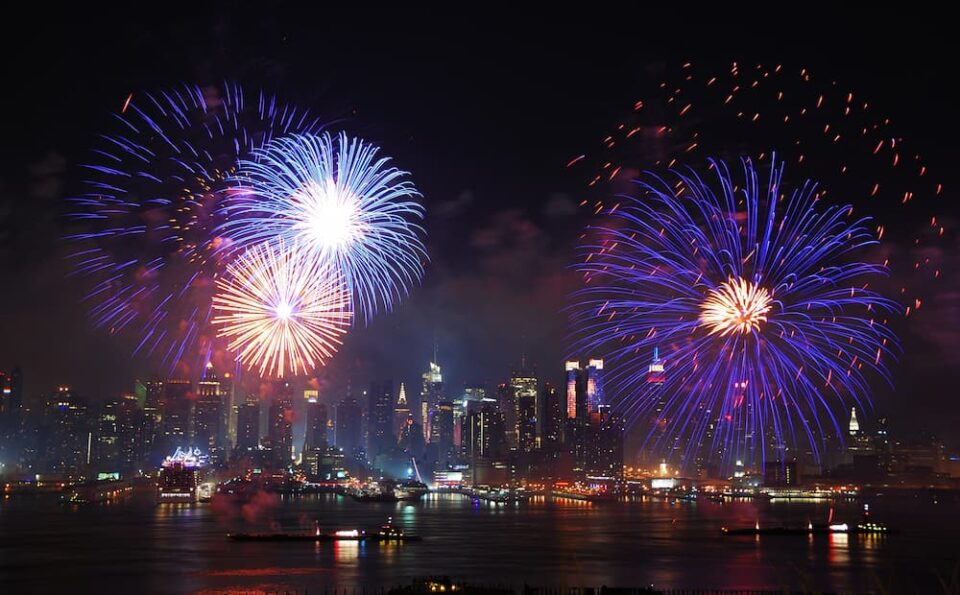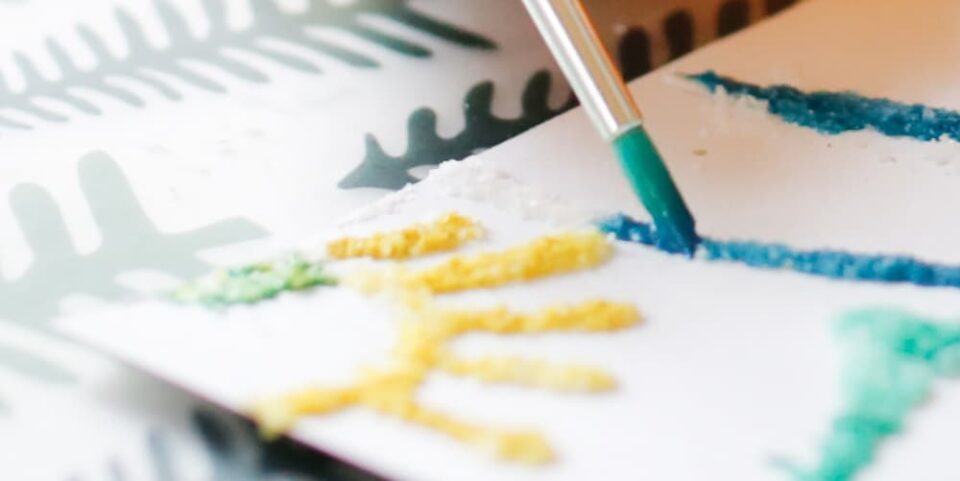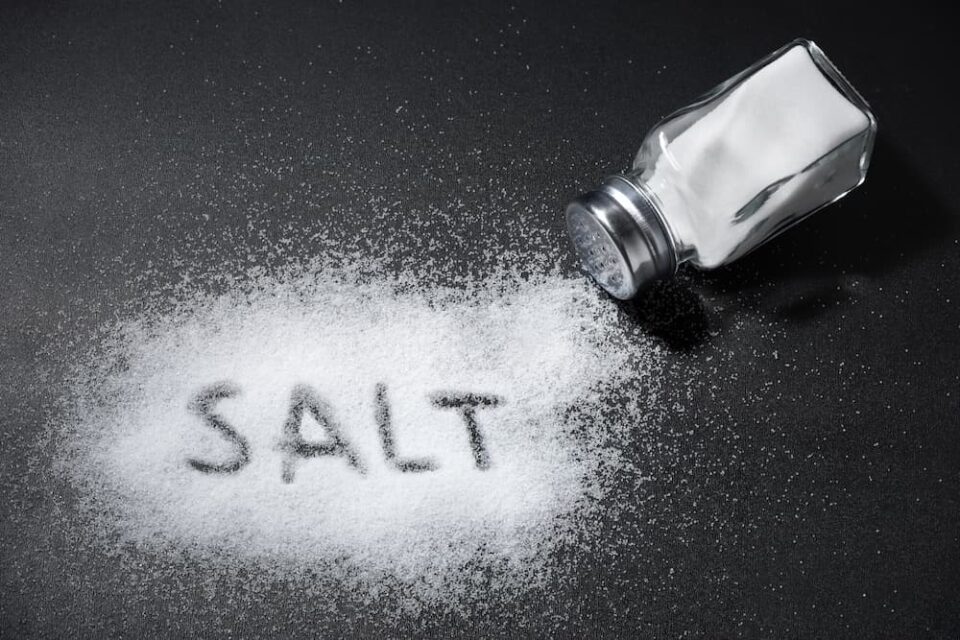
Celebrate the Fourth of July with 3D Salt Painting Art
Every country has its national celebrations, days that mark important moments in the story the country tells about itself. In the U.S., one of the most widely celebrated of those days falls on July 4, which is known as Independence Day and often referred to as the Fourth of July.
The day commemorates the formal adoption of the Declaration of Independence by the Continental Congress in 1776, and it has always been a time for loud, bright celebrations. Fourth of July festivities began in 1777 with fireworks, bonfires, parades, and more as people in the U.S. repurposed ways they had long celebrated the birthday of the king of England. Within the next few years, the holiday spread. Massachusetts was the first state to declare it an official holiday in 1781, and celebrations grew bigger after the War of 1812. In 1870, the federal government made it an official holiday across the nation.

John Adams, one of the founders of the U.S., originally wanted people to celebrate Independence Day on July 2, the day the Continental Congress voted in favor of the Declaration of Independence (although it wasn’t formally adopted quite yet). He wrote that the day “ought to be solemnized with Pomp and Parade with shews [shows], Games, Sports, Guns, Bells, Bonfires and Illuminations from one End of this continent to the other from this Time forward forever more.” His preference for the date didn’t pan out, but his wish for everything else certainly has! Hundreds of millions of people in the U.S. celebrate the Fourth of July every year, spending billions of dollars on food and festivities.
Looking to add a little sizzle to your Fourth of July celebrations this year? Here’s a patriotic DIY art activity that’s sure to help your kids’ imaginations catch fire. Combining raised salt painting with a firework design really makes the colors pop!
Here’s How to Make 3D Salt Art Fireworks
These 3D salt art fireworks are easy to make. Kids of all ages can perform all the steps, although younger kids may make a bit of a mess!

Materials
- Squeezable white glue
- Black cardstock or construction paper
- Table salt
- Watercolor paints
- Paintbrush
- Hair spray (optional)
Directions
- Use the white glue to squeeze firework shapes onto the paper (younger children may need an adult’s help squeezing out the glue). Using circles of glue with lines arcing away from them like bursting fireworks usually creates a clear design.
- Pour salt over all the areas of the paper containing wet glue. Shake extra salt off onto a plate.
- Have kids gently dab or drip—not brush—watercolor paints onto the salt with a paint brush. Encourage them to layer on multiple colors. Continue until all the salt has been saturated with paint. Then step back and watch the salt absorb the colors!
- Let the image dry completely. Depending on the humidity in your home, this can take up to several days. Once the glue is dry, an adult can spray the picture with a light layer of hair spray to temporarily fix the salt in place. The salt will eventually start to crumble, so these pictures won’t last forever. But kids will sure have fun making them!
Raised Salt Art: Beautiful 3D Creations

Salt art makes a fun activity for kids because it adds depth and texture to their artwork. For kids used to coloring or making watercolor art, discovering that their designs can rise up from the page is a revelation.
Using salt to make art isn’t just for kids, though. Professional artists around the world use it to make incredible creations as well. The Japanese artist Motoi Yamamoto is famous for creating elaborate, mesmerizing salt designs of mountains, fields, staircases, and abstract patterns in temporary installations that are later tossed into the sea. When his daughter was young, she used to help him get the salt ready! Other artists from countries as far flung as Croatia, Afghanistan, the U.S., and Canada also use salt to make photorealistic portraits, pictures of the cosmos, and other incredible images.
How Does Salt Art Work?
As your kids watch their creations take on beautiful colors, you have a great opportunity to talk with them about what’s happening. Salt is hygroscopic, meaning it absorbs water. When an artist drops watercolor paint onto it, the water flows into the salt, bringing the dissolved colors with it and making the salt expand and rise. Salt is so good at absorbing water, in fact, that it can pull it right out of the air if the humidity is high enough!
Want to turn your salt art into a fun experiment? Try these variations and see what happens.
- Substitute sugar for the salt (the art should still work!)
- Use food coloring mixed with water instead of watercolor paint
- Use water with no paint in it to create raised areas of white between lines of color
- Try a different kind of salt, like sea salt, and see whether it absorbs the paint as well
- Make a rainbow using lines of glue in an arc and the colors red, orange, yellow, green, blue, indigo, and violet. Once you’re finished, compare your salt art to a picture of a real rainbow. Did the colors blend the same way in your art as they do in real life, or differently?
Happy Crafting!
Looking for more decorations to make with kids for the Fourth of July? Our eagle craft might come in “handy.” Or host a patriotic painting party with friends. Even the youngest kids can get in on the fun with red, white, and blue homemade puffy paint!
And if your child likes art projects, they’re sure to love our Early Explorers or World Edition subscription lines! Each monthly delivery will take them on an adventure to a new place around the world with hands-on activities, exciting stories, and more.
